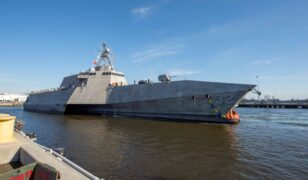C4ISR embraces collaboration, generating growth opportunities for advanced cybersecurity solutions
 Military command and control, communications, computers, intelligence, surveillance, and reconnaissance (C4ISR) solution providers have acknowledged the requirement for improved collaboration, and enhancements commercial off-the-shelf (COTS) hardware and software can provide, and are weaving them into their systems. Global C4ISR spending will grow steadily through 2020, demonstrating the significance of cybersecurity solutions sales, assured GPS/navigation, unmanned sea vehicles and missile defense systems.
Military command and control, communications, computers, intelligence, surveillance, and reconnaissance (C4ISR) solution providers have acknowledged the requirement for improved collaboration, and enhancements commercial off-the-shelf (COTS) hardware and software can provide, and are weaving them into their systems. Global C4ISR spending will grow steadily through 2020, demonstrating the significance of cybersecurity solutions sales, assured GPS/navigation, unmanned sea vehicles and missile defense systems.
Global C4ISR Market, 2016 is part of Frost & Sullivan’s Defense Growth Partnership Subscription. According to the study, Asia-Pacific, Middle East and North Africa, and Europe will gain market share as military forces and systems in these regions are modernized. While the surveillance & reconnaissance segment will be the largest, the electronic warfare segment will demonstrate the highest growth rate through 2020.
“Advancements such as hypersonic weapons and unmanned naval systems will require the development of new countermeasures,” said Frost & Sullivan aerospace & defense industry principal Brad Curran. “As nations have been at the receiving end of determined, nation-state and criminal computer hacking of networks, they are keen to invest in cybersecurity.”
While frequent technological advances are raising the levels of competition, they also challenge companies to separate incremental technology advances from emerging technologies that will disrupt their industries. The number of companies providing basic military capabilities in every region is rising, as countries seek advanced technology and look to lower dependence on outsiders. This, in turn, is intensifying competition and shrinking margins.
“Nevertheless, C4ISR companies have many reasons to feel optimistic. High-margin, high-quality C4ISR gear continues to account for the majority of the market, as reliability, quality and sustainment services emerge as bigger purchase factors than lower costs and tech transfer negotiations,” noted Curran. “Buyers have also shown a marked preference for proven designs that can be integrated with existing equipment in regional and allied nations, opening up the market to innovative security technology firms.”
About Frost & Sullivan








